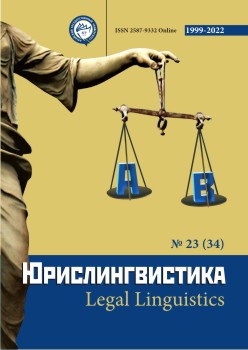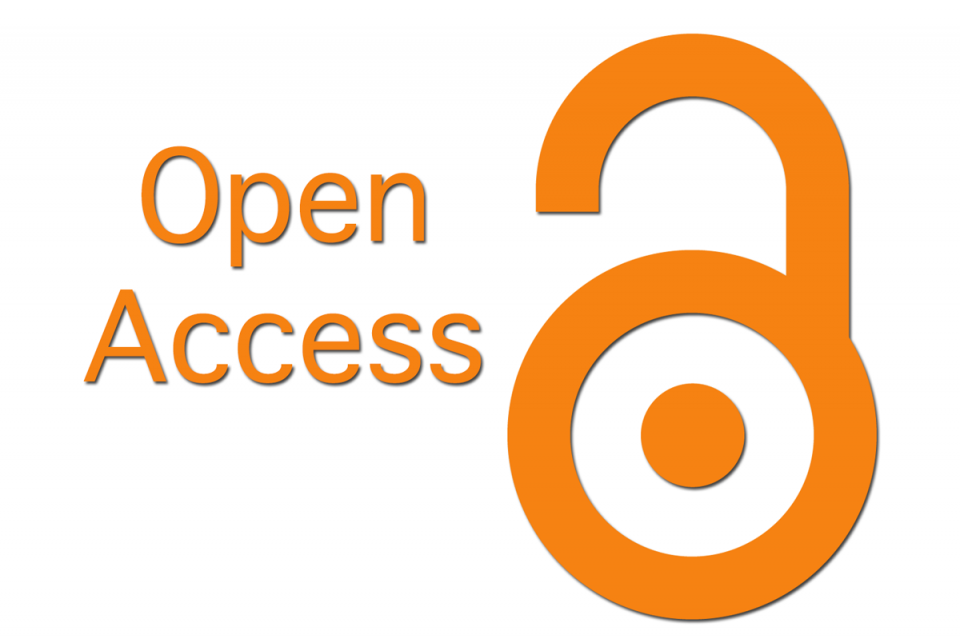The Essence and Content of the Principle of Gender Equality in the Texts of Normative Legal Acts of the Scandinavian Countries
Abstract
The article is devoted to the study of the category of "gender equality" in the system of some normative legal acts of the Scandinavian countries. The purpose of the work is to show the effectiveness of legal regulation and ensuring the principle of gender equality in the legal policy of this group of states. Guided by the hermeneutic methodology, the authors came to the conclusion that the positive experience of dealing with discriminatory factors is characteristic of modern Sweden. The very concept and term "discrimination" is clearly formulated and defined at the level of regulatory regulation. The Swedish legislator also specifies the manifestations and forms of discriminatory actions.
The publication shows that in Norway one has to observe the concept of establishing specialized government structures. The Norwegian Ministry of Children and Family Affairs includes a special department for gender equality. All this objectively contributes to the effective construction and promotion of true equality for both sexes.
It was established that acting in accordance with other Scandinavian countries, the Danish legislator adopted a special law “On gender equality”. The content of the concept of gender equality, as follows from the text of this document, includes the principle of equal social integration, and is inextricably linked with the concept of equal influence of men and women and their equal opportunities in all spheres of society
It is also emphasized that the content and essence of the principle of gender equality in the legislation of Norway, Sweden and Denmark is directly related to such categories as "women's rights", "prohibition of discrimination", "equal social integration" and "equality of men and women".
Downloads
Metrics
References
Брюхина Е.Р., Третьякова Е.С. Права женщин в контексте универсальных, региональных и национальных (российских) стандартов и механизмов защиты прав человека // Вестник Пермского университета. – Юридические науки. – 2021. – №53. – С. 516-540.
Гончаренко О.К. Международное и национальное право и практика защиты женщин от домашнего насилия // Женщина в российском обществе. – 2020. – №3. – С. 53-65
Закон о равных возможностях // URL: https: // lagen.nu/ 1991:433
Костенко Е.П., Кузнецова С.Ю. Инструменты преодоления гендерного неравенства на рабочем месте: опыт Франции // JER. – 2019. – №4. – С. 78-83
Каширкина А.А., Морозов А.Н. Европейский опыт оценки гендерной проблематике совместимость международных стандартов и национальных правовых подходов // Женщина в российском обществе. – 2021. – №3 – С. 3-17
Кашина М.А., Пяхкель А.А. Обеспечение реализации гендерного равноправия де-юре и де-факто: опыт стран Европейского союза // Теоретическая и прикладная юриспруденция. – 2020. – №2. – С. 56-71
Каширкина А. А., Морозов А. Н. Права женщин в современном обществе: результат генезиса или объективная необходимость? // Женщина в российском обществе. – 2020. – №1 – С. 3-16
Конституция Швеции // URL https://legalns.com/download/books/cons/sweden.pdf
Лошакова Ю.П. Защита прав женщин в контексте гендерного равноправия (На материалах законодательства Швеции) // Женщина в российском обществе. – 2011. – № 2. – С. 55-58
Невежина М.В. Гендерная дискриминация в сфере труда: опыт борьбы на международном уровне // Журнал зарубежного законодательства и сравнительного правоведения. – 2018. – №3 (70). – С. 36-45
Олсен А.Л. Продвижение применения гендерных показателей в муниципалитетах Дании. Записка, подготовленная Статистическим бюро Дании 10 февраля 2014 г // URL https://unece.org/fileadmin/DAM/stats/documents/ece/ces/ge.30/2014/mtg_1/9_DNK_R.pdf
Слободчикова С.Н. Гендерный паритет в контексте принципа свободных выборов // Избирательное право. – 2018. – №1 (37). – С. 57-62
Торосян Р. А. Международные стандарты гендерного равенства // Известия Саратовского университета. Новая серия. Экономика. Управление. Право. – 2015. – №3. – С. 347-351
Штылева М.В. Политика гендерного равенства стран Северной Европы // Актуальные проблемы гуманитарных и естественных наук. –2011. – № 3. – С.14-16.
Peters A. Die Pandemieund das Völkerrecht (The Pandemic and Public International Law) (February 9, 2021), в: Max Planck Institute for Comparative Public Law & International Law (MPIL) Research Paper No. 2021-03. P. 43
References
Bryukhina E.R., Tretyakova E.S. (2021) Women's rights in the context of universal, regional and national (Russian) standards and mechanisms for the protection of human rights // Bulletin of the Perm University. - Legal sciences.. No. 53. Р. 516-540. (in Russian).
Goncharenko O.K. (2020). International and national law and practice of protecting women from domestic violence // Woman in Russian society. No. 3. Р. 53-65 (in Russian).
Equal Opportunity Law // URL: https: // lagen.nu/ 1991:433 (in Sweden)
Kostenko E.P., Kuznetsova S.Yu. (2019) Tools for overcoming gender inequality in the workplace: French experience // JER. No. 4. Р. 78-83 (in Russian).
Kashirkina A.A., Morozov A.N. (2021) European experience in assessing gender issues compatibility of international standards and national legal approaches // Woman in Russian society. No. 3. P. 3-17 (in Russian).
Kashina M.A., Pyakhkel A.A. (2020). Ensuring the implementation of gender equality de jure and de facto: the experience of the countries of the European Union // Theoretical and applied jurisprudence. No. 2. Р. 56-71 (in Russian).
Kashirkina A. A., Morozov A. N. (2020). Women's rights in modern society: the result of genesis or an objective necessity? // Woman in Russian society. No. 1. P. 3-16 (in Russian).
Loshakova Yu.P. (2011) Protection of Women's Rights in the Context of Gender Equality (Based on Swedish Legislation) // Woman in Russian Society. No. 2. P. 55-58 (in Russian).
Nevezhina M.V. (2018) Gender Discrimination in the Sphere of Work: Experience of Struggle at the International Level // Journal of Foreign Legislation and Comparative Law. No. 3 (70). Р. 36-45 (in Russian).
Olsen A.L. (2014) Promoting the use of gender indicators in Danish municipalities // Note prepared by Statistics Denmark on February 10, 2014 Available from: URL
https://unece.org/fileadmin/DAM/stats/documents/ece/ces/ge.30/2014/mtg_1/9_DNK_R.pdf (in Sweden)
Peters А. (2021) Die Pandemieund das Völkerrecht (The Pandemic and Public International Law) (February 9, 2021), in: Max Planck Institute for Comparative Public Law & International Law (MPIL) Research Paper No. 03. P. 43 (in German)
Slobodchikova S.N. (2018) Gender parity in the context of the principle of free elections // Suffrage Law. No. 1 (37). Р. 57-62 (in Russian).
Shtyleva M.V. (2011). Politics of gender equality in the Nordic countries // Actual problems of the humanities and natural sciences. No. 3. P.14-16. (in Russian).
Swedish Constitution // URL https://legalns.com/download/books/cons/sweden.pdf (in Sweden)
Torosyan R. A. (2015) International standards of gender equality // Bulletin of the Saratov University. New episode. Economy. Control. Right. No. 3. Р. 347-351 (in Russian).
Copyright (c) 2022 Александр Головинов

This work is licensed under a Creative Commons Attribution 4.0 International License.
The authors, which are published in this journal, agree to the following conditions:
1. Authors retain the copyright to the work and transfer to the journal the right of the first publication along with the work, at the same time licensing it under the terms of the Creative Commons Attribution License, which allows others to distribute this work with the obligatory indication of the authorship of this work and a link to the original publication in this journal .
2. The authors retain the right to enter into separate, additional contractual agreements for the non-exclusive distribution of the version of the work published by this journal (for example, to place it in the university depository or to publish it in a book), with reference to the original publication in this journal.
3. Authors are allowed to post their work on the Internet (for example, in a university repository or on their personal website) before and during the review process of this journal, as this may lead to a productive discussion, as well as more links to this published work (See The Effect of Open Access).











